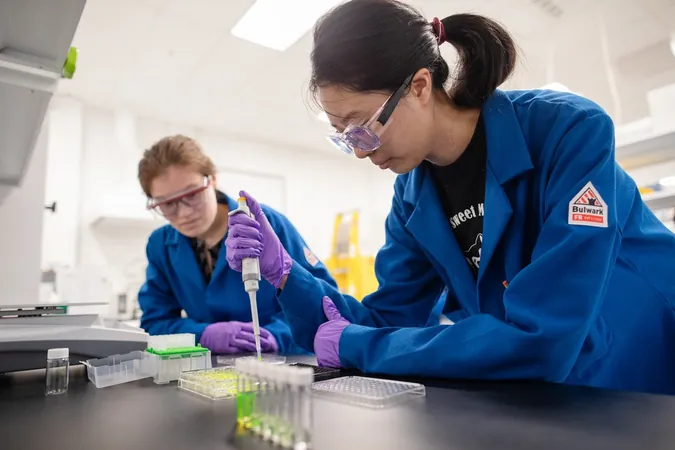
Revolutionary Swallowable Sensor Simplifies Monitoring of Gut Inflammation
2025-08-27
Author: Sophie
Introducing the Game-Changer for IBD Patients
Imagine a world where monitoring your gut health is as easy as taking a pill! A groundbreaking team of researchers, including brilliant minds from the University of Toronto, has unveiled a remarkable innovation: a swallowable, low-cost sensor that empowers individuals with inflammatory bowel diseases (IBD) to keep tabs on their health right from home.
How Does It Work?
Welcome to the future of health monitoring! Enter the PRIM (Pill for ROS-responsive Inflammation Monitoring) device—an ingenious pill that reacts to gut inflammation by releasing a harmless blue dye. This color change is not just a science experiment; it transforms stool and toilet water into a vivid blue signal, serving as a straightforward alternative to invasive procedures like colonoscopies.
Why This Matters Now More Than Ever
With over seven million people battling IBD worldwide, flare-ups can strike unexpectedly, creating a desperate need for reliable monitoring. Traditional methods? They’re either too invasive, costly, or often avoided by patients. Colonoscopies may be the industry standard, but who wants repeated trips to the clinic? And while stool tests offer a less daunting option, many shy away from the thought of collecting samples.
A Tool for Patients, By Researchers
Enter Caitlin Maikawa, an assistant professor at the Institute of Biomedical Engineering at the University of Toronto and co-lead of this innovative research. “We aimed to create a tool that makes routine inflammation monitoring easy and accessible,” she asserts. The device’s design focuses on being simple and patient-friendly, making it possible to detect inflammation without reliance on a lab.
The Science Behind the Magic
So, how does this ingenious PRIM device identify issues? It cleverly employs reactive oxygen species (ROS), which surge in the intestines during inflammation. Its special coating ensures the pill stays intact under normal conditions but breaks apart when ROS levels spike, releasing that signature blue dye and signaling a problem.
Accuracy That Impresses
In pre-clinical trials, this remarkable pill achieved around 68% accuracy in detecting gut inflammation. Plus, the cherry on top? Manufacturing costs are projected to be under 50 cents per unit. This opens doors for widespread accessibility, especially for communities with limited resources.
A Glimpse into the Future
Researchers are hard at work refining the pill's design to enhance its clinical potential. Lucia Huang, co-lead author and a master’s student, is exploring new polymer materials to elevate the sensitivity of inflammation detection. The next steps include testing in larger animal models that more closely resemble human conditions.
Making Health Monitoring Effortless
Maikawa adds, “We’re dedicated to refining this pill and exploring how it can integrate with digital health technologies.” The ultimate goal? To revolutionize routine inflammation monitoring into a simple, everyday task.









 Brasil (PT)
Brasil (PT)
 Canada (EN)
Canada (EN)
 Chile (ES)
Chile (ES)
 Česko (CS)
Česko (CS)
 대한민국 (KO)
대한민국 (KO)
 España (ES)
España (ES)
 France (FR)
France (FR)
 Hong Kong (EN)
Hong Kong (EN)
 Italia (IT)
Italia (IT)
 日本 (JA)
日本 (JA)
 Magyarország (HU)
Magyarország (HU)
 Norge (NO)
Norge (NO)
 Polska (PL)
Polska (PL)
 Schweiz (DE)
Schweiz (DE)
 Singapore (EN)
Singapore (EN)
 Sverige (SV)
Sverige (SV)
 Suomi (FI)
Suomi (FI)
 Türkiye (TR)
Türkiye (TR)
 الإمارات العربية المتحدة (AR)
الإمارات العربية المتحدة (AR)